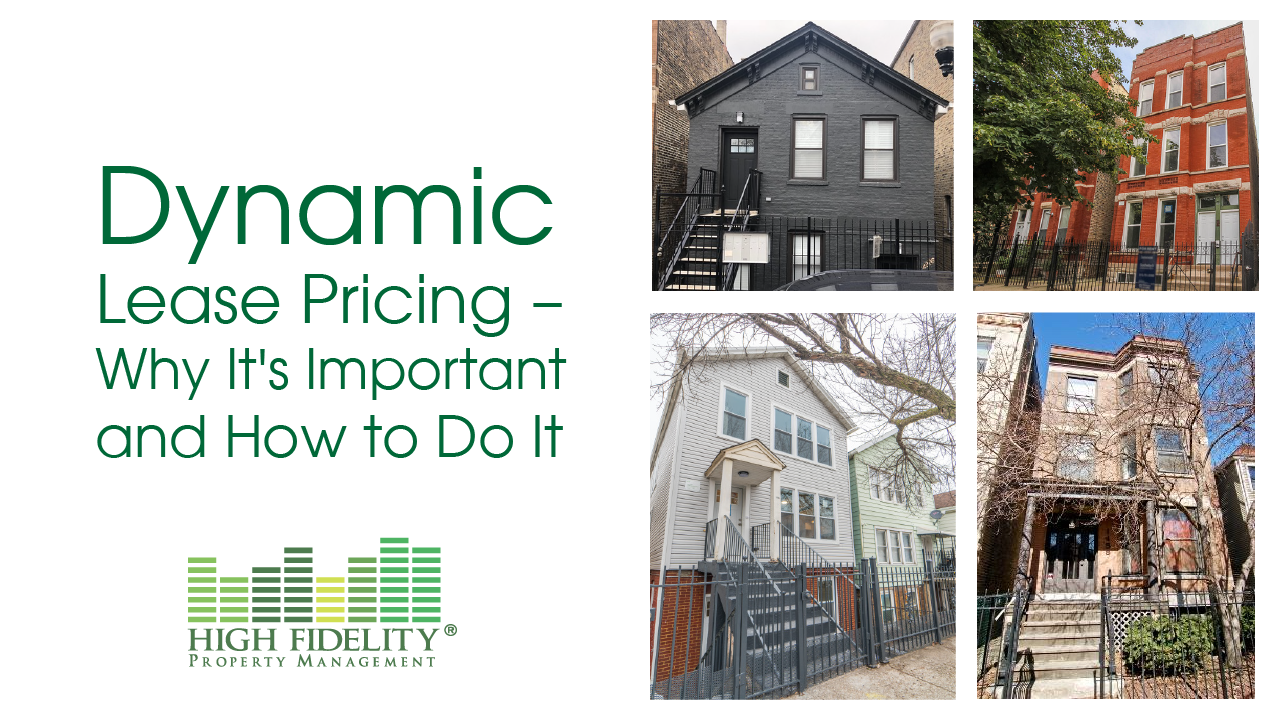How much should you charge for rent? It’s a simple question, yet we must consider countless variables before arriving at the answer. For High Fidelity Property Management — which manages 1,000 units throughout the Chicagoland area — the question of rates is answered through our use of dynamic lease pricing.
What is dynamic lease pricing?
In short, the practice of dynamic pricing involves adjusting apartment valuations to reflect ever-changing market conditions. Specifically, the practice allows property managers to utilize readily available data to potentially set a higher price during periods of greater demand and a lower price when demand dips — think “surge” pricing.
If used correctly, dynamic pricing has the ability to positively impact revenue while also maintaining occupancy and the appeal of properties.
Why is it important and what are the benefits?
Using dynamic pricing allows property managers to quickly arrive at their optimal rent without burning valuable market time and leaving potential revenue on the table. The practice also virtually eliminates vacancy — giving managers the opportunity to reap the full benefits of their properties while also remaining competitive in a fast-moving market. Essentially, it takes the guesswork out of setting rates by using widely accessible data instead of adopting the “set it and forget it” mentality that often leaves other properties high and dry.
Dynamic pricing also lends itself to proper valuation of properties through the eyes of renters. When immersed in existing market conditions, renters often know what to expect in their price range. If a typically mid-range apartment maintains a high price in a laggard market, renters will quickly dismiss the property and look elsewhere. However, if rates are strategically adjusted to accommodate a waning economy, properties will maintain their allure along with their occupancy rates.
How can you implement dynamic lease pricing?
Here at High Fidelity, the Leasing Coordinator and I review our availability list on a bi-weekly basis. From there, we use various sources to garner information such as lead flow, traffic, agent feedback, and neighborhood comps to make adjustments — increases or decreases — to rents.
This fluidity enables us to move alongside the market, rather than remaining obstinate in a never-ending uphill battle. The data is there, and technology has lent access to areas that gives managers a firm grasp on profitability — why not use it? Of course, not every bit of data will prove beneficial. Discovering what information is relevant will take time initially, but it’s nothing compared to wasting hours upon hours making predictions based on whims and best guesses.
To make a potentially long story short — setting rental rates too high can turn off potential leasees, while adopting rates that are too low can stifle growth and competitiveness. In a business that’s all about timing, dynamic pricing allows managers to stay ahead of the curve, maintain visibility, and set rates that ensure the greatest benefit from the current market.
To chat further about leasing strategies and property management, please email me at john@hifipm.com.
